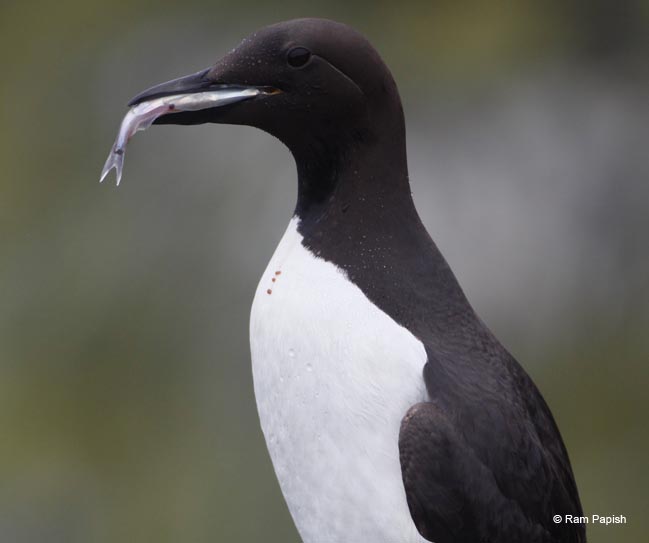Tim Birkhead and colleagues have spent the last 6 years examining different hypotheses (possible explanations) for why common murre (also known as the common guillemot in the Atlantic) eggs have their unique pointy shape.
This story is a great example of how our scientific understanding continues to expand if we question what we see and don’t just accept commonly assumed theories.
The well-established explanation for the unique shape of the murre egg has been that eggs roll in an arc to prevent them from falling off narrow cliff ledges. However, the rolling arc of a murre egg is usually much wider than the breeding site, so this theory doesn’t hold. Other ideas discussed have been that a pointy egg is stronger, and that this shape keeps the blunt end of the egg above the muck on the cliff edge.
Students tested the hypothesis of egg strength during Seabird Camp 2018 on St. Paul Island. Campers also made their own murre eggs out of paper mache (above photo).
Birkhead and colleagues have now come up with a new and very compelling hypothesis:
Pointy eggs are more stable on sloping cliffs because more of the egg is in contact with the cliff.
Murres are colonial species, and usually breed in large dense groups as a way of defending eggs and chicks against aerial predators such as gulls.
High-density nesting requires high flexibility in choice of breeding site, and many murre parents have to incubate their egg on extremely precarious cliff slopes. Imagine passing incubation duties over to your mate, shuffling the egg between legs, with the ocean roaring 60 meters below!
Razorbills also nest on high cliffs, but are less social and can be more choosy about their nest site. In comparison to the murre, the razorbill egg is rounder and much less stable on sloping cliffs.
Check out this great video from Skomer Island (Wales) that describes these recent findings.


